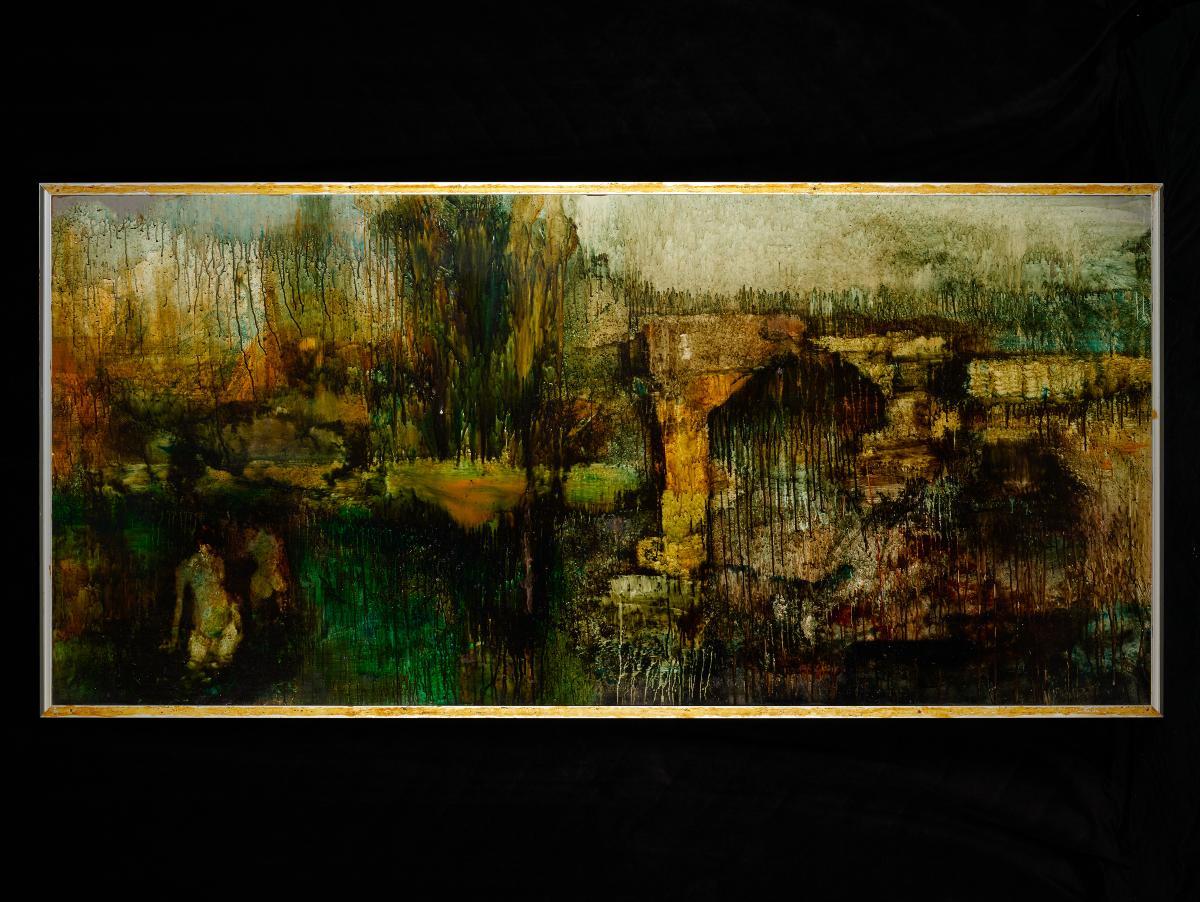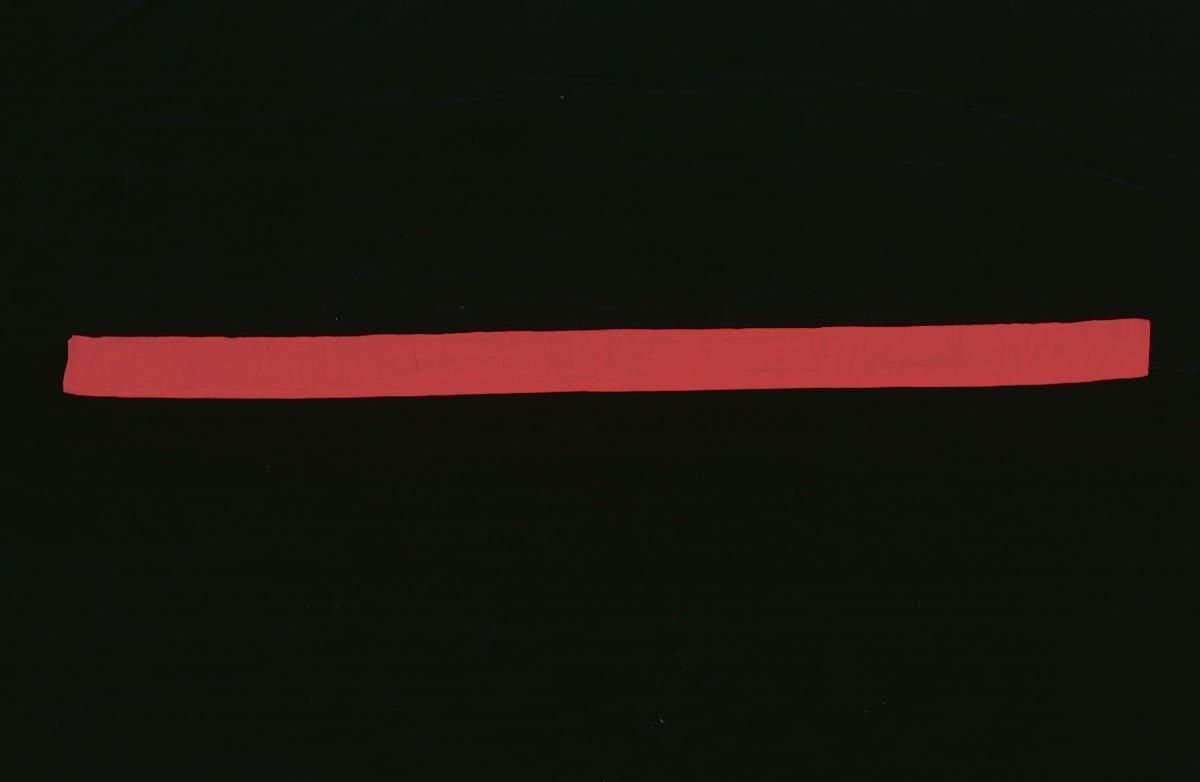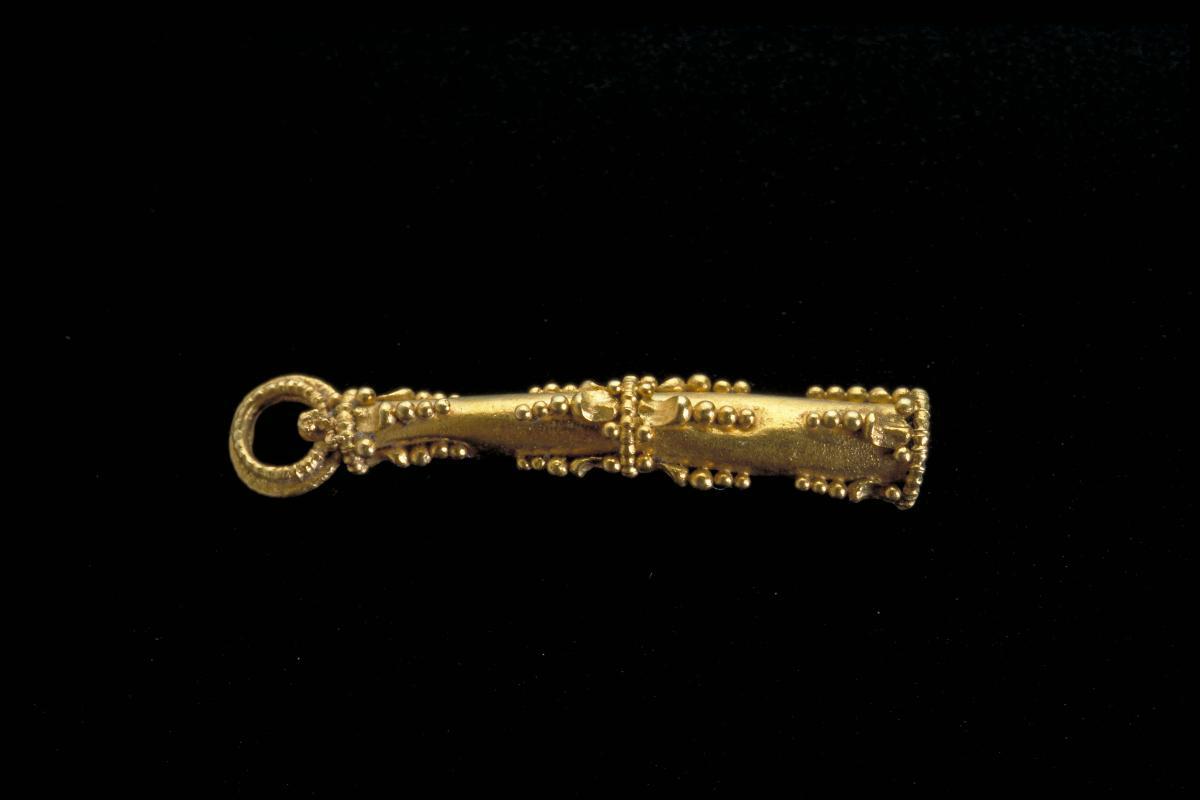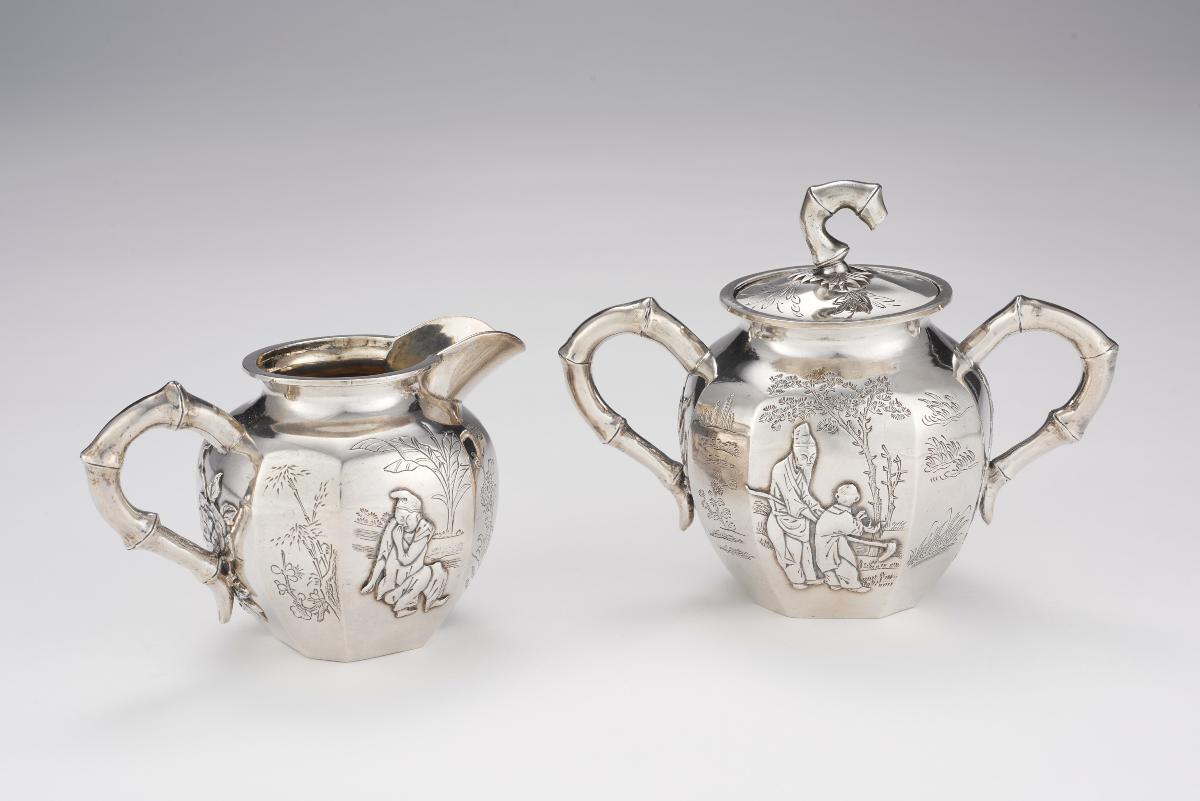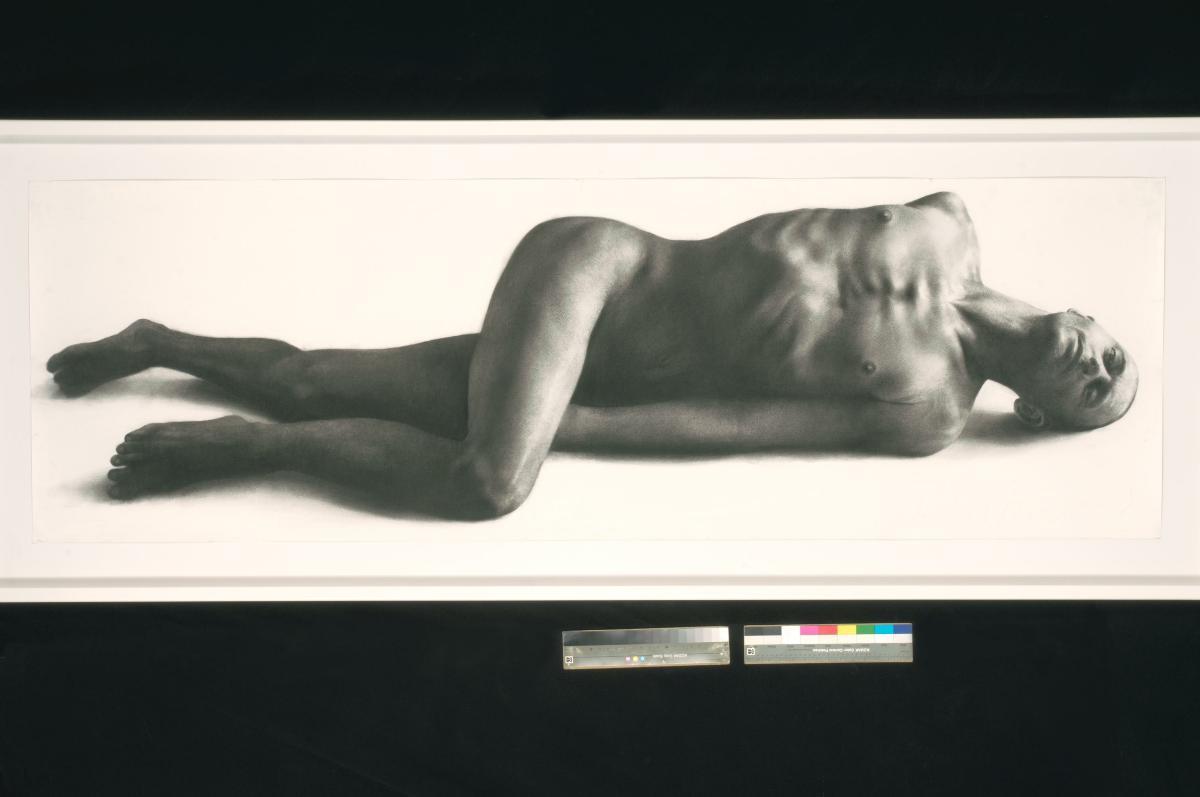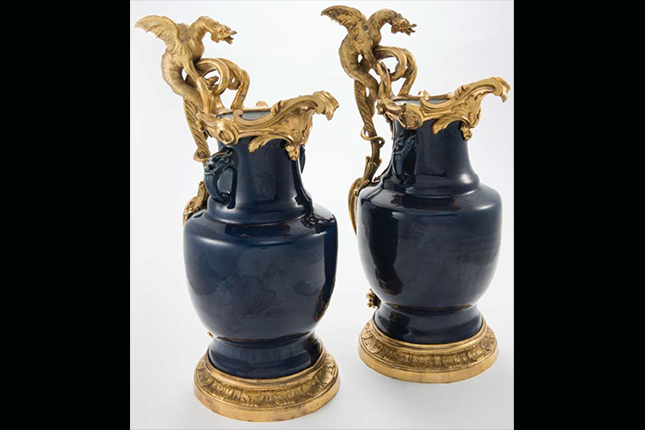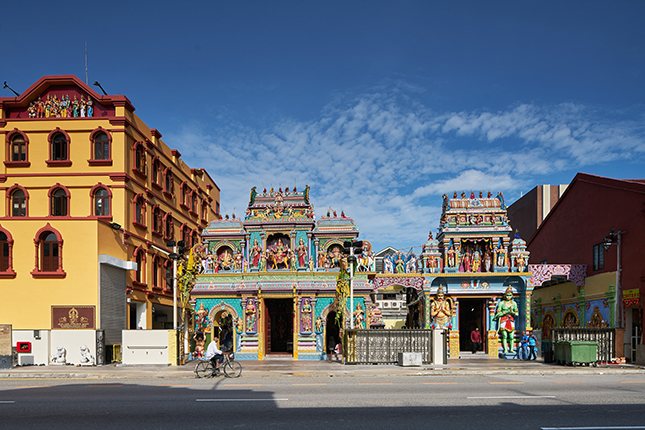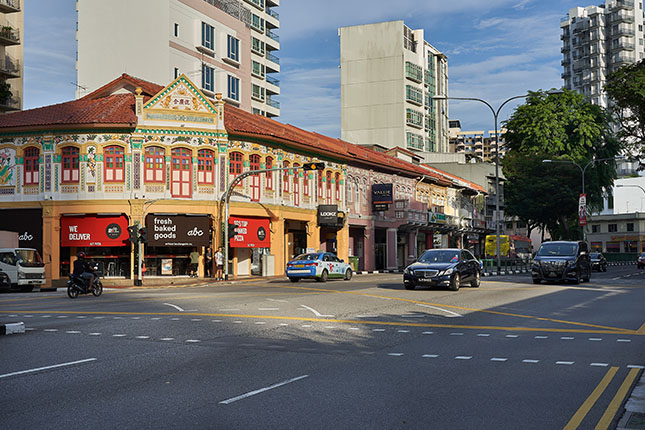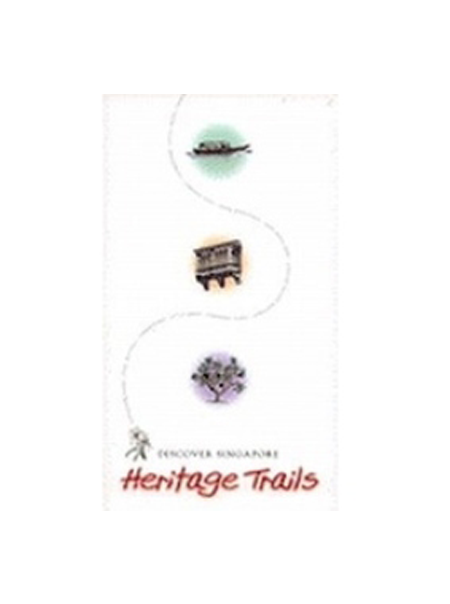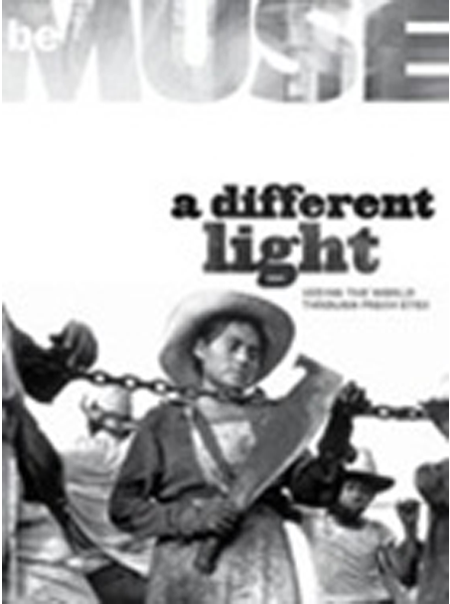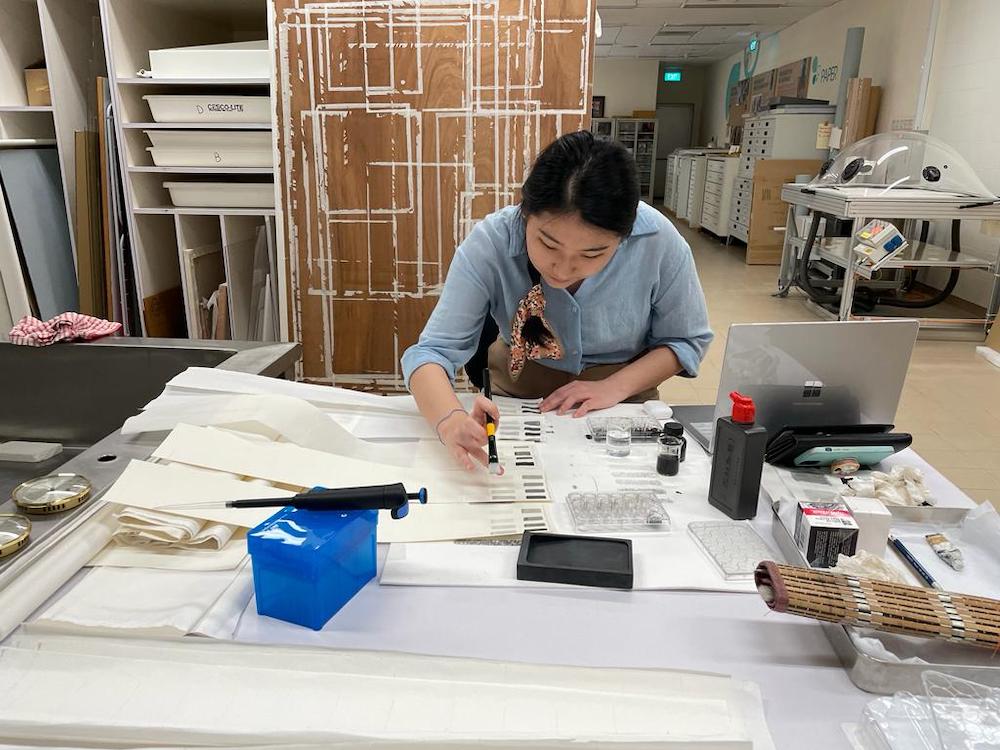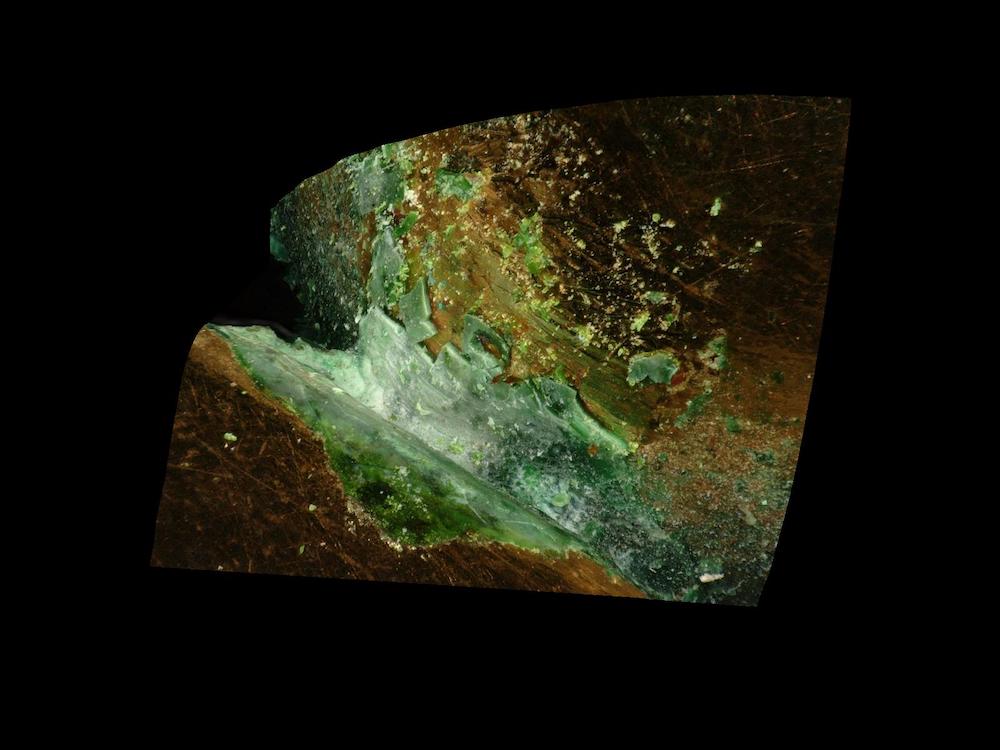Frame size: 138.0 x 291.0 x 5.0 cm
Produced at a time when many artists were preoccupied with high modernism, Hoisington’s work suggests the artist took paths less trodden, readily experimenting with industrial paint on a scale that spoke of his familiarity with working on a commissioned basis. Inspired by artists like Watteau, Degas and Jackson Pollock, Hoisington’s painterly approach of drips and washes offers an alternative that eschews dominant forms of modern painting in search of a visual language he could call his own. The untitled work executed using polyurethane paint suggests a landscape that may have been loosely based on architectural ruins. Figures reside in the foreground of the painting, resonant with the artist’s longstanding preoccupations with the figure. The yellow, green and brown tones of the work are at times translucent, demonstrating how the artist approached layering of tints in a technique also seen on the Entrepreneur. The body of work seems to suggest that Hoisington had been working through a certain technique devised specifically in relation to the material properties of polyurethane paint, to create translucent finishes that had a matte, textured finish. A self-taught artist, Hoisington nevertheless eked out a living through large scale metalwork commissions for banks, and even large installations designed for new buildings like the Standard Chartered building in Kuala Lumpur. Hoisington’s exhibition history is notable particularly through the first and second Singapore Sculpture exhibitions, aside from which his works largely were conceived of as commissions, documented in newspaper articles and photographs as opposed to exhibition catalogues.




